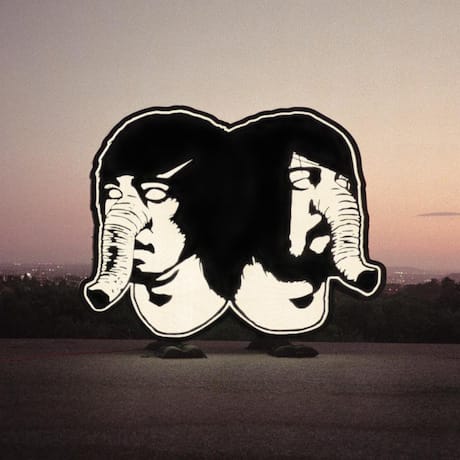Given the musical ground both artists covered in their time apart, Death From Above 1979 2.0 could have incorporated a multitude of sounds and styles. Yet in recording their first album in ten years, Jesse F. Keeler and Sebastien Grainger were smart not to pile on the overdubs, slick up their sound or abandon the visceral punch that lay at the heart of their best moments. The opening clang that introduces "Cheap Talk" feels less like a statement of musical purpose and more like a comforting signal to listeners that no, things haven't changed that much in the duo's time away from the spotlight.
But The Physical World isn't a mere re-tread. Many of these songs are far leaner than the drum and bass attack Keeler and Grainger offered on You're a Woman, I'm a Machine, and where producer D. Sardy does add sonic flourishes, like the title track's chip-tune intro, those sounds add texture rather than distracting from the group's pummelling modus operandi. There's a stronger sense of melody in Grainger's vocals, and the group aren't afraid to make some stylistic diversions, most notably on half-time rockers "White is Red" and "Trainwreck 1979." The former is one of the album's strongest tracks; the latter, a bid for radio play.
But these tracks highlight lesser lights like "Nothing Left" and "Gemini" that find the duo on auto-pilot. Still, that we even have a new Death From Above 1979 record to talk about is a godsend for fans; that it comes even close to living up to a decade's worth of expectations is a minor miracle.
Read our story on Death From Above 1979's new album here.
(Last Gang)But The Physical World isn't a mere re-tread. Many of these songs are far leaner than the drum and bass attack Keeler and Grainger offered on You're a Woman, I'm a Machine, and where producer D. Sardy does add sonic flourishes, like the title track's chip-tune intro, those sounds add texture rather than distracting from the group's pummelling modus operandi. There's a stronger sense of melody in Grainger's vocals, and the group aren't afraid to make some stylistic diversions, most notably on half-time rockers "White is Red" and "Trainwreck 1979." The former is one of the album's strongest tracks; the latter, a bid for radio play.
But these tracks highlight lesser lights like "Nothing Left" and "Gemini" that find the duo on auto-pilot. Still, that we even have a new Death From Above 1979 record to talk about is a godsend for fans; that it comes even close to living up to a decade's worth of expectations is a minor miracle.
Read our story on Death From Above 1979's new album here.
